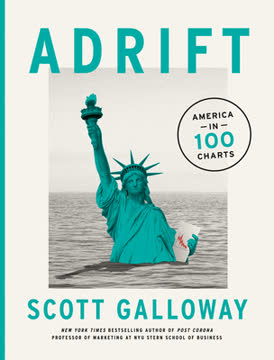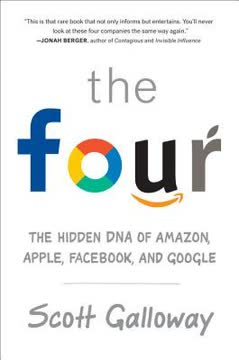Key Takeaways
1. America Adrift: A Nation Divided and Disconnected
We are a nation adrift. We lack neither wind nor sail, we have no shortage of captains or gear, yet our mighty ship flounders in a sea of partisanship, corruption, and selfishness.
A nation floundering. America, despite its immense resources and capabilities, finds itself lost in a sea of internal strife. Our public discourse has become coarse, young people struggle to form meaningful relationships, and the pursuit of individual glory often overshadows the collective good. This internal decay, marked by decaying institutions and fraying social fabric, signals a profound crisis.
The lost ballast. The post-World War II era, a period of unprecedented prosperity and progress, offers a stark contrast. This success wasn't just due to a "Greatest Generation" but to robust state support and a collective investment in a strong middle class. Policies like the G.I. Bill, housing legislation, and the interstate highway system, funded by progressive taxes (top rate 91%), created a broad, inclusive middle class that served as capitalism's "ballast," providing stability and widely distributed prosperity.
A crossroads moment. Just as in 1945 and 1980, America stands at a critical juncture. The current challenges—from a devastating pandemic to the unforeseen externalities of exceptional technologies—demand a clear-eyed assessment. The data reveals a nation that has achieved tremendous prosperity but little true progress, as the spoils accrue to fewer and fewer parties, leaving us divided and disconnected.
2. The Great Divergence: Wealth Concentrates, Middle Class Erodes
The U.S.’s greatest innovation was not a thing, it was a social and economic construct: the middle class.
Shareholder value reigns. Following the 1960s and '70s, America embraced "shareholder value" as its new religion, prioritizing stock price above all else. This ethos, cemented by policies like the Reagan tax cuts (top marginal rate fell from 70% to 28%), aimed to spur growth by reducing taxes on the wealthy. While the economy roared, this shift led to unprecedented federal deficits and a dangerous lack of long-term thinking, with national debt now exceeding 120% of GDP.
Productivity gains, stagnant wages. A profound decoupling occurred: U.S. productivity soared, but average worker compensation stagnated. Between 1973 and 2014, net productivity grew 72%, while hourly worker compensation grew just 9%. This meant the benefits of increased efficiency flowed primarily to shareholders and top executives, not the labor force.
- CEO-to-worker compensation ratio: 21:1 in 1965, 351:1 in 2020.
- Top 1% of earners: Wages increased almost 140% between 1979 and 2013.
- Bottom 99%: Wage growth was nearly eight times slower.
Dystopian wealth distribution. The result is a stark wealth inequality. In 2021, the wealthiest 1% of Americans controlled almost a third of the nation's wealth, while the bottom 50% controlled only 2%. This entrenchment of wealth, fueled by policies favoring asset holders (e.g., lower capital gains taxes, mortgage interest deductions), has made the American Dream of upward mobility increasingly elusive, replaced by the grim reality that it's "never been easier to become a billionaire—but it’s never been harder to become a millionaire."
3. The Idolatry of Innovators: Tech's Power and Its Perils
The void created by a decrease in church attendance and reliance on a superbeing was filled by a modern-day savior: the innovator.
From community to individual worship. America's shift towards individualism has led to the lionization of "innovators," particularly tech founders, as modern-day saviors. This narrative often conflates luck with genius, overlooking the foundational role of government investment in technologies like the internet, GPS, and the computer chip. This idolatry has diverted attention from decaying community organizations, with church attendance and participation in groups like the Boy Scouts plummeting.
Privatized progress, public cost. As federal R&D funding declined, private investment filled the gap. While this spurred innovation, it meant the fruits of research became privately owned, escaping democratic control. This unchecked power is evident in the tech sector's growing influence:
- Trillion-dollar valuations: Companies like Tesla reached $1 trillion with significantly less revenue than earlier giants like Apple, driven by storytelling over fundamentals.
- "Yogababble": Nonsensical, exaggerated mission statements obscure actual business models and enable overpromising.
- Lobbying boom: Tech firms' lobbying spend increased elevenfold in 20 years, influencing policy to their benefit (e.g., dual-class share structures entrenching founder control).
Misplaced priorities. The media's obsession with tech billionaires and their escapades (like space tourism) further highlights this misplaced idolatry, diverting attention from critical issues like climate change. This focus on individual spectacle over collective well-being underscores a dangerous trend where the pursuit of private gain overshadows societal needs, even when basic infrastructure like safe drinking water remains a challenge for millions.
4. The Attention Economy: We Are the Product, Algorithms Divide
If you are not paying, then you are not the customer. You are the product.
The mobile-social paradigm shift. The iPhone's 2007 debut, coupled with the rise of social media, fundamentally reshaped human interaction. Our attention became the new currency, monetized by platforms like Google and Meta, which derive over 80% of their revenue from advertising. Americans now spend a third of their waking hours on phones, with over half that time on social media.
Algorithms of enragement. The core mechanism driving this attention economy is the algorithm, which has discovered that content provoking anger, awe, or anxiety garners the most engagement. This has led to a dangerous feedback loop:
- Falsehoods spread faster: Lies on Twitter spread six times faster than truth.
- Untrustworthy news: Facebook refers users to untrustworthy sources over 15% of the time.
- Extremist steering: 64% of people joining extremist Facebook groups are steered there by algorithms.
Erosion of trust and truth. This algorithmic prioritization of outrage has decimated traditional news media, with newspaper ad revenue plummeting and newsroom employment falling 26% since 2008. As journalistic integrity wanes, public trust in national news organizations has sharply declined, particularly among Republicans. The result is a society siloed in echo chambers, where manufactured controversies fuel polarization and prevent meaningful discourse, making us a "house divided."
5. Fraying Social Fabric: A Crisis for Young Men and Relationships
A large and growing cohort of bored, lonely, poorly educated men is a malevolent force in any society, but it’s a truly terrifying one in a society addicted to social media and awash in coarseness and guns.
Declining male prospects. A silent crisis is unfolding among young American men, impacting their education, economic prospects, and social connections. Boys are twice as likely to be suspended from school, and men now account for only 40% of college enrollments, down from nearly 60% in 1970. This educational gap translates directly to limited professional opportunities and lower lifetime earnings.
Relationships in decline. The ability of young men to form meaningful relationships is also eroding. Marriage rates in the U.S. hit an all-time low in 2020, lower than during the Great Depression. This decline is most pronounced among lower-income men, while higher-income women have seen their marriage rates remain stable or even increase.
- Financial expectations: Over two-thirds of Americans believe it's "very important" for a man to financially support his family.
- Dating app inequality: Dating apps, like Hinge, exhibit extreme inequality, with a tiny fraction of users receiving the vast majority of matches, creating a "have" and "have-not" dynamic.
- Failure to launch: With fewer economic pathways and relationships, a record 52% of young adults lived with their parents in 2020, a level not seen since the Great Depression.
Societal consequences. This growing cohort of economically insecure, lonely, and poorly educated men poses a significant threat. Mass murder, for instance, is a uniquely male crime, with 92% of attackers being male and over two-thirds under 35. This frustration, amplified by social media and easy access to firearms, manifests as rage and volatility, further fracturing a nation already struggling with political polarization and a profound erosion of trust in government.
6. Declining Hegemony: China Rises as America Looks Inward
After thirty years of hegemony, we are once again in a bipolar world, and a superpower duopoly will again be the organizing principle. This time the countervailing force against the U.S. is China.
Erosion of American supremacy. While the U.S. still boasts impressive metrics—majority of world's largest companies, 30% of global R&D, largest defense budget—its long-held economic and military hegemony is in decline. The COVID-19 pandemic painfully exposed America's vulnerabilities, highlighting its inability to effectively manage a crisis despite vast resources, contrasting sharply with China's rapid response.
China's ascendance. China is rapidly challenging U.S. dominance, shifting from a low-cost labor provider to a skilled and innovative economic powerhouse.
- Trade dominance: Three times as many nations now consider China their largest trade partner compared to the U.S., a trend amplified by China's ambitious Belt and Road Initiative.
- Military might: While the U.S. outspends China nominally on defense, China's military purchasing power parity (MPPP) makes its budget two-thirds of the U.S., and it leads in military drone exports, gaining experience and scale.
- R&D shift: The U.S. share of global R&D spending has fallen from 69% in 1960 to 30% today, as other nations, particularly China, increase their investment in future technologies.
Misaligned priorities. The U.S. budget allocation reflects a dangerous disconnect from its most pressing threats. The CDC, for instance, received roughly 1% of the defense budget to combat a pandemic that killed more Americans than all 20th-century wars combined. This underinvestment in critical institutions and the erosion of America's global brand as a model of democracy signal a nation looking inward, risking its leadership in a rapidly changing world.
7. The Path Forward: Reinvest in People, Institutions, and the Future
We’ve gotten closest to realizing our ideals when we’ve balanced ruthless capitalism with the ballast of a strong middle class.
Rebalancing capitalism. America's past success stemmed from a balance between dynamic capitalism and a robust middle class. To course-correct, we must re-embrace this principle, making massive investments in our people and institutions. This means simplifying the tax code, rebuilding regulatory systems to deter corporate misconduct (e.g., fines that are more than a fraction of revenue), and reforming Section 230 to hold social media companies accountable for their externalities.
Investing in human capital. A fundamental shift in priorities is needed to support children and families, recognizing that early education and childcare are economic superchargers.
- Child Tax Credit: A universal $3,000-per-child allowance could nearly halve child poverty.
- Higher Education Reform: Taxing elite university endowments and linking public subsidies to enrollment expansion, alongside abolishing accreditation cartels, can make college more accessible and affordable.
- Vocational Training: Expanding professional certifications and apprenticeships, which lead to high-paying jobs but are underutilized in the U.S., offers alternative pathways to upward mobility.
Rebuilding social cohesion. Beyond economic reforms, fostering human connection and trust is paramount. This includes rethinking incarceration, which disproportionately affects minorities and costs billions, and investing in national service programs like the Peace Corps or National Guard Youth Challenge. These initiatives build empathy, provide vocational opportunities, and strengthen the social fabric. The future is not predetermined; it depends on our collective will to invest in a more just, connected, and resilient America.
Last updated:
Review Summary
Adrift receives mixed reviews, with praise for its data-driven approach and insightful charts depicting America's social and economic challenges. Critics appreciate Galloway's analysis of complex issues but note oversimplification and cherry-picking of data. Some find the book depressing, while others value its hopeful outlook. Readers commend the accessible format and thought-provoking content, though some argue it lacks depth. The book's focus on America's decline and potential solutions resonates with many, but others find the arguments scattered or obvious.
Similar Books
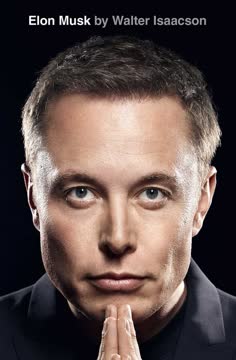
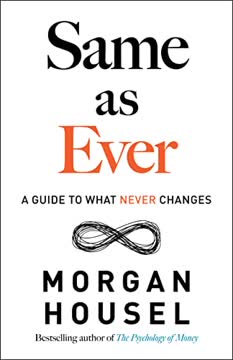



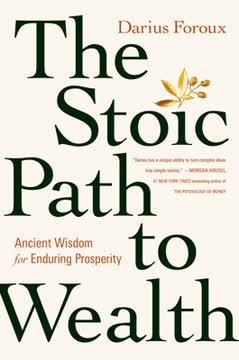
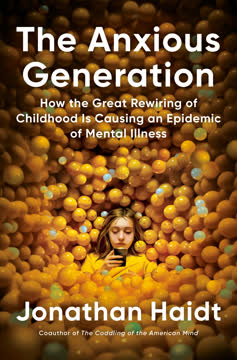



Download PDF
Download EPUB
.epub digital book format is ideal for reading ebooks on phones, tablets, and e-readers.
